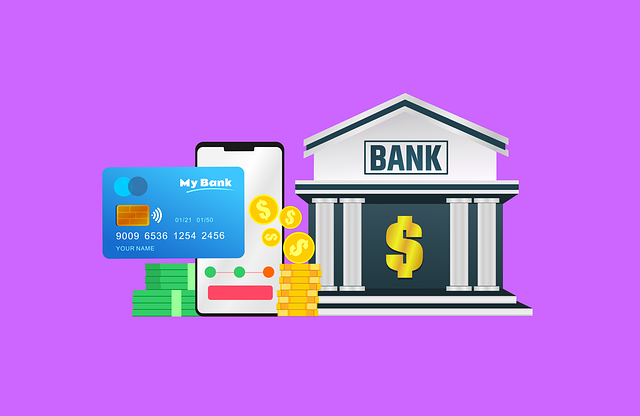Alternative business financing, driven by peer-to-peer lending and crowdfunding, offers entrepreneurs faster capital access with transparent loan fees. Unlike traditional banking, alternative lenders charge various fees like origination and processing costs, and interest rates vary based on creditworthiness and terms. Understanding these complexities empowers businesses to make informed decisions, compare options effectively, and choose loans that align with their financial goals. This transparency fosters competition, drives down costs, and expands access to capital for diverse sectors. Strategically comparing alternative loans from multiple lenders, leveraging online platforms, and enhancing credit scores can help minimize loan fees and reduce the overall cost of financing.
In today’s dynamic business landscape, understanding alternative financing options is crucial for entrepreneurs seeking growth capital. This article delves into the concept of cost transparency in alternative business financing, exploring how it empowers businesses to make informed decisions about their funding choices. We dissect the complexities of loan fees in alternative lending, emphasize the impact of transparency on loan structures, and provide strategies for businesses to navigate and optimize loan interest costs, ultimately distinguishing alternative loans from traditional banking options.
- Understanding Alternative Business Financing and Its Benefits
- Unveiling the Complexities of Loan Fees in Alternative Lending
- The Impact of Transparency in Alternative Loan Structures
- How Alternative Loans Differ from Traditional Banking Options
- Strategies for Businesses to Navigate and Optimize Loan Interest Costs
Understanding Alternative Business Financing and Its Benefits

Alternative business financing has gained significant traction in recent years as a game-changing option for entrepreneurs and small businesses seeking capital. Unlike traditional banking loans, alternative financing options include a diverse range of lending mechanisms such as peer-to-peer lending, crowdfunding, and specialized business credit lines. These methods offer unique benefits like faster access to funds, flexible terms, and tailored solutions for various business needs.
One of the key advantages is cost transparency. With alternative loans, interest rates, and associated fees are often clearly outlined from the outset. This allows businesses to budget effectively and avoid hidden charges commonly found in traditional loan agreements. For instance, many alternative lenders provide detailed break-ups of costs, including origination fees, service charges, and potential penalties, ensuring borrowers have a comprehensive understanding of their financial obligations.
Unveiling the Complexities of Loan Fees in Alternative Lending

In the realm of alternative business financing, understanding the intricacies of loan fees is pivotal for entrepreneurs and small businesses navigating this landscape. Alternative loans, often touted as more accessible and flexible funding options, come with their own set of complexities when it comes to loan fees and interest rates. Unlike traditional banking models, where terms are relatively straightforward, alternative lending platforms may structure fees in various ways, making it crucial for borrowers to delve into the details.
These loan fees can encompass a myriad of charges, including origination fees, processing costs, and early repayment penalties. The interest rates on alternative loans can also vary widely, influenced by factors such as creditworthiness, loan-to-value ratio, and the specific terms agreed upon between borrower and lender. Unveiling these complexities is essential for businesses to make informed decisions, ensuring they fully comprehend the financial commitments they are entering into.
The Impact of Transparency in Alternative Loan Structures

In the realm of alternative business financing, cost transparency is a game-changer. When it comes to alternative loan structures, clarity and openness about loan fees and interest rates are pivotal for fostering trust between lenders and borrowers. This transparency empowers businesses to make informed decisions, understanding fully the financial commitments they’re entering into. By providing detailed breakdowns of costs, including origination fees, service charges, and variable or fixed interest rates, lenders build credibility and encourage long-term partnerships.
Businesses seeking alternative loans benefit from this transparency as it allows them to compare different financing options effectively. They can assess the overall cost of borrowing, identify potential hidden fees, and choose the loan that best aligns with their financial goals and risk tolerance. This level of transparency enhances competition among lenders, driving down costs and expanding access to capital for businesses across various sectors.
How Alternative Loans Differ from Traditional Banking Options

Alternative loans represent a distinct departure from traditional banking options, offering a new approach to financing for businesses seeking capital. Unlike conventional bank loans that often come with stringent requirements and a lengthy approval process, alternative loans are characterized by greater flexibility and accessibility. These non-bank lending sources typically include online lenders, peer-to-peer (P2P) platforms, and specialized financial institutions.
One of the key differences lies in the structure of fees and interest rates. Traditional banking often involves hidden costs and complex fee structures, making it challenging for businesses to accurately predict their borrowing expenses. In contrast, alternative loans tend to have more transparent pricing models, with clear loan fees and variable or fixed interest rates. This transparency empowers borrowers by providing them with a better understanding of the financial commitment associated with the loan, fostering trust and facilitating informed decision-making.
Strategies for Businesses to Navigate and Optimize Loan Interest Costs

Many alternative business financing options come with unique sets of costs and charges, commonly referred to as loan fees. To effectively navigate this landscape, businesses must adopt strategic approaches that optimize their loan interest costs. Firstly, compare multiple lenders and their associated alternative loans products to identify those offering competitive rates and transparent fee structures. This process can be streamlined through online platforms designed for such comparisons.
Additionally, understanding the factors influencing loan interest is key. Lenders consider creditworthiness, loan amount, term length, and market conditions when setting rates. Businesses can enhance their negotiating power by improving their credit scores, providing robust financial disclosures, and demonstrating a clear repayment plan. Regularly reviewing loan terms and exploring refinements or prepayments can also significantly reduce the overall cost of financing.






